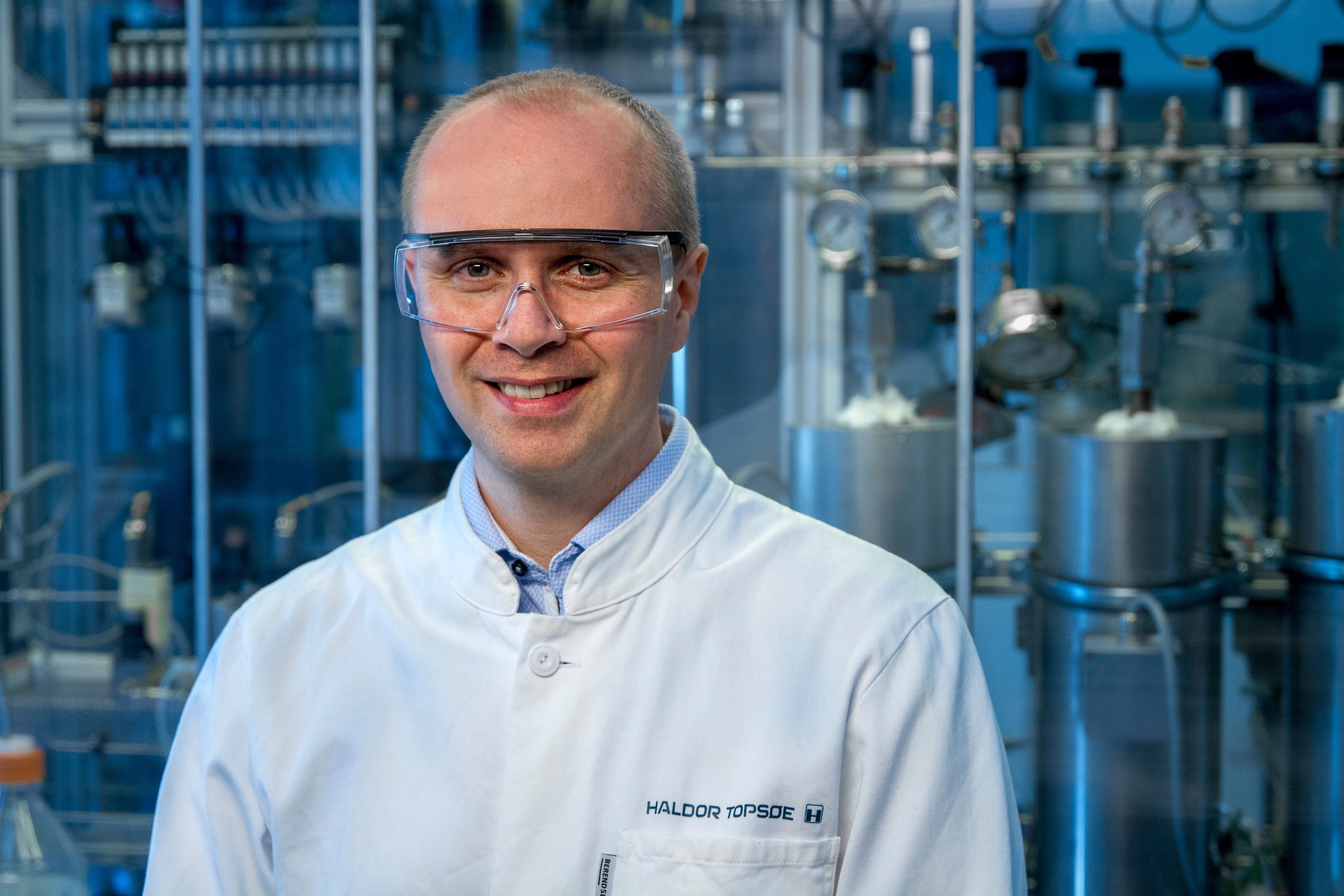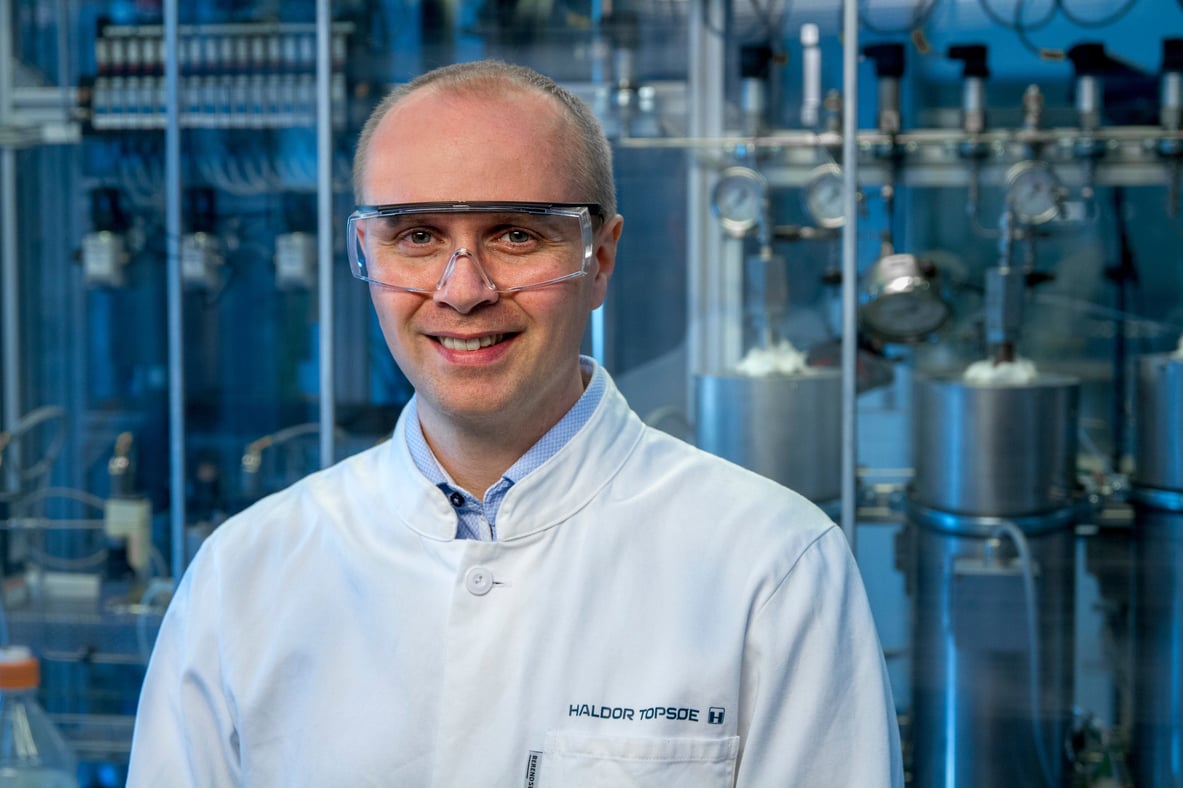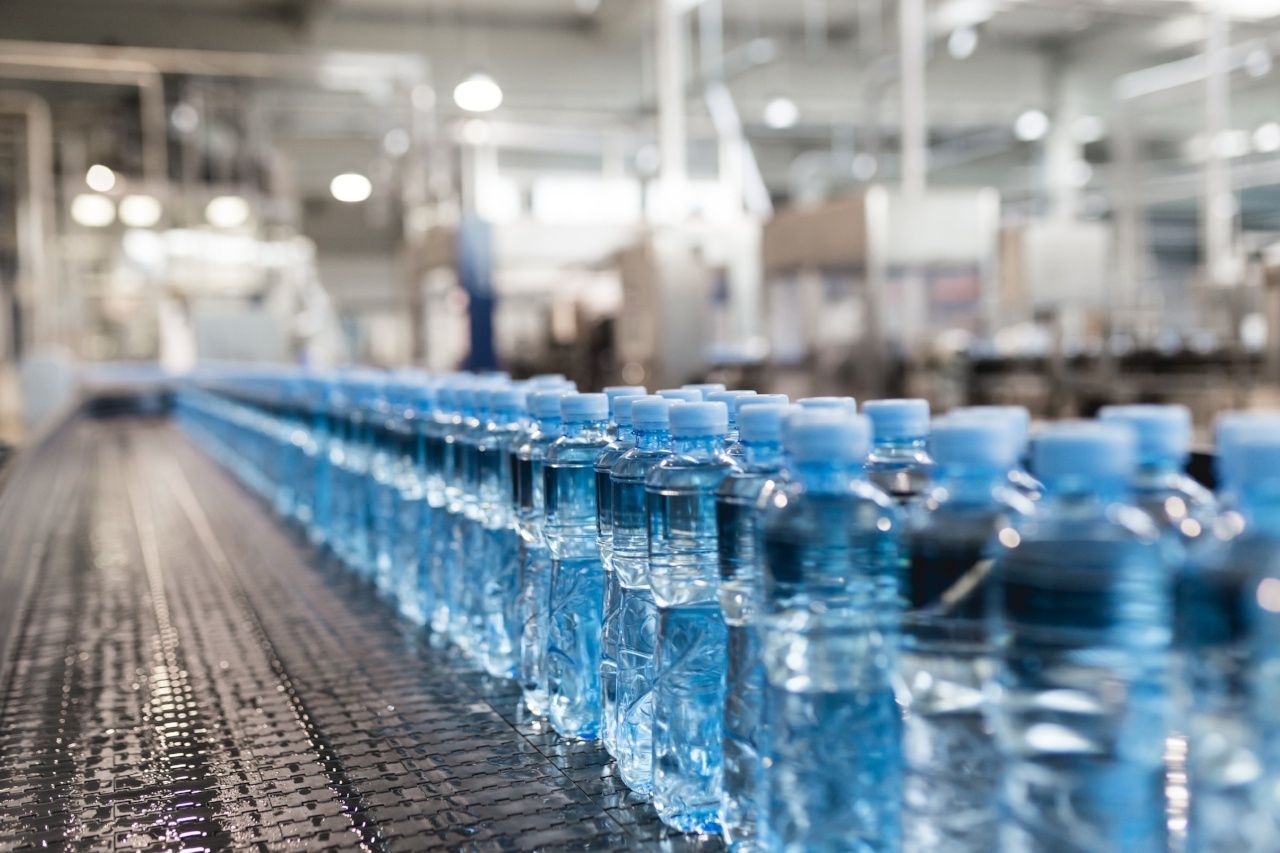
On the occasion of the first official World Creativity and Innovation Day, we asked Esben Taarning, R&D Director at Topsoe, about his innovative work within biochemicals and the future possibilities in this area.

You recently won the prestigious Torkil Holm Award for your outstanding contribution to the development of sustainable and catalytic methods for the valorization of biomass. Can you explain what your innovation within bio-based chemicals is all about?
In my research, I’ve been trying to find out how to efficiently use biomass as a feedstock to produce everyday products, for example plastic bottles, that today come mostly from fossil fuels. The challenge was to find a proper catalyst that enables efficient conversion of sugars to useful products. It was a true detective hunt: we had to try out materials with different catalytic properties and different process types and see which ones would work better, and, as the prize reflects, we’ve had some success.
How is this innovative, though?
Take a look at our recent partnership with Braskem for production of MEG (monoethylene glycol), a key component of PET. In the process that we’re trying to commercialize, we take sugar and, chop it into smaller pieces that can be easily processed and turned into bio-plastics. We’re currently working on a demo plant to demonstrate that this is commercially feasible.
Once it is successfully demonstrated, you can envision completely new value chains emerge within the production of chemicals. The agricultural sector will supply bio-refineries with biomass which will convert it into sugars. That can be then converted via Topsoe’s technology by companies such as Braskem.
Biomass has the potential to become an advantageous feedstock over oil for the production of certain chemicals, since it has a lot of chemical functionality that can be reused or slightly altered, provided the right catalytic process is invented. This can reduce the number of needed process steps compared to using oil. However, it is also clear that that not all chemicals can be made efficiently from biomass and it is important to focus on those chemicals where biomass can compete.
How can this help to solve some of the environmental challenges?
By reducing the number of process steps and using a feedstock that is annually renewable, these new processes can lead to a smaller environmental footprint of the final product. Additionally, it could create great development opportunities for countries and areas that are not so rich in oil, for example Brazil, Thailand, or even Europe. And this is only the beginning! Maybe in the future we will be able to convert biomass into new and useful building blocks that are either nonexistent today or are simply too expensive to produce from oil? A lot can change thanks to sugar.

Why sugar?
Sugar constitutes 75% of all biomass, and it can be obtained from many different sources such as cane, beet, corn, and even wood and straw can be processed into sugars that can be converted to chemicals. There’s an abundance of sugar in the world and every year the agriculture gets more and more efficient. Today, around 150 million tons of sugar are used every year to produce ethanol for gasoline substitution. In the future, there might not be such a vast need for liquid fuels so maybe it will make more sense economically and environmentally to use it to replace the oil that is used for chemicals production.
This is definitely a new area to us but we have to go into new areas and get our foot in the door in order to grow in the future. Besides, there are many similarities between what we do now as a business and what the process would look like with sugar so we can clearly use our expertise. We basically use our core competencies to develop in a new area.
What does this all mean to the business?
Our technology will be useful to produce several different chemicals from biomass. For the case of MEG, which is a well-established chemical product, we can predict the future growth, and the commodity nature of the market is similar to other areas we are active in. For other chemicals we are looking at, especially new chemicals which do not have a large established market, the situation is different and we need to talk with other companies about possible applications and market development.There is a lot more uncertainty, but also more possibilities since these new chemicals could have high value as well as useful but unexplored properties. And the possibilities are basically endless: for example, your screen cover protecting your phone can be made from bio-plastics, same with the soles of your shoes.
We see interest is in both extremes of the value chain, also among the end users. For example, the paper industry – as we use less and less paper, they look into new possibilities, for example converting wood into sugar, and so on. Many companies want to make their value chain greener.
We’re still defining our role in the whole process. In general, we want to have the best solutions for transforming sugar feedstocks to chemicals using catalysis. We’re looking for partners at either the feedstock end or the chemicals end of the value chain who are willing to invest money and time into a future solution. We need skilled partners who understand the challenges and are ready to face them with us. The benefit can be significant if we dare to try.
How do you see innovation personally and how does it work in Topsoe?
To me, innovation starts when you have an idea with a potential to solve a real problem. Team effort is of course required, and I think we’re very good at that in Topsoe. Collectively, we have so much knowledge across the company and, through the daily work with colleagues and partners, we put that knowledge into good use in developing new solutions. I think it is a very fun and creative way to work and every day I learn something new.

Share your thoughts
Comment on this post